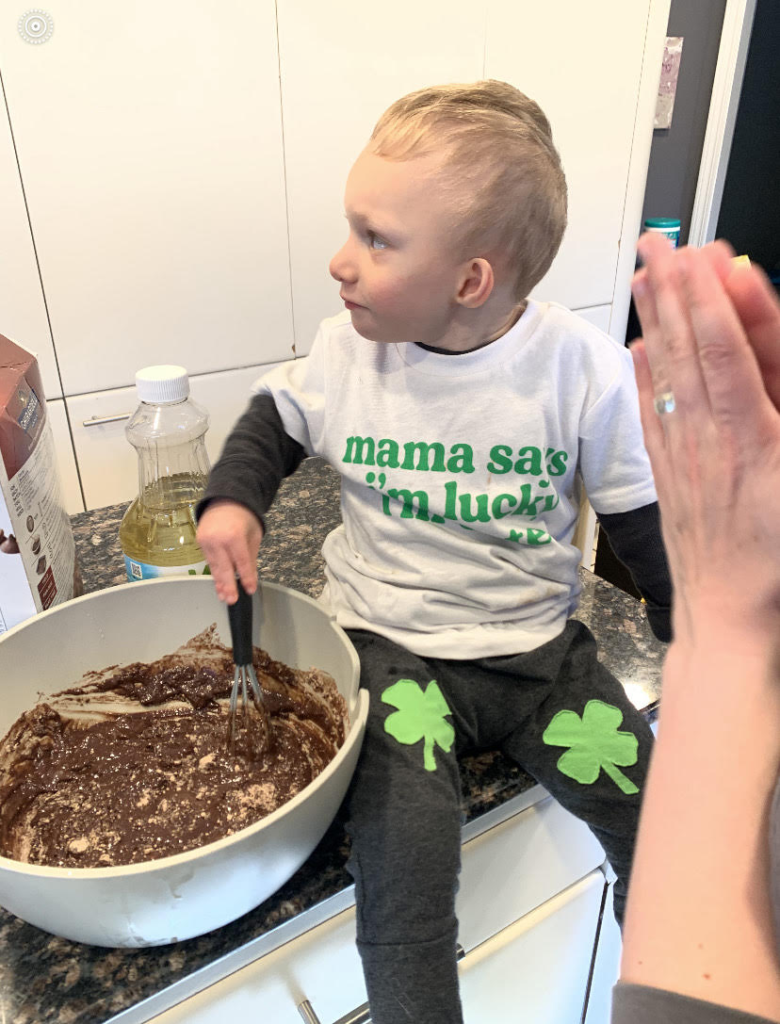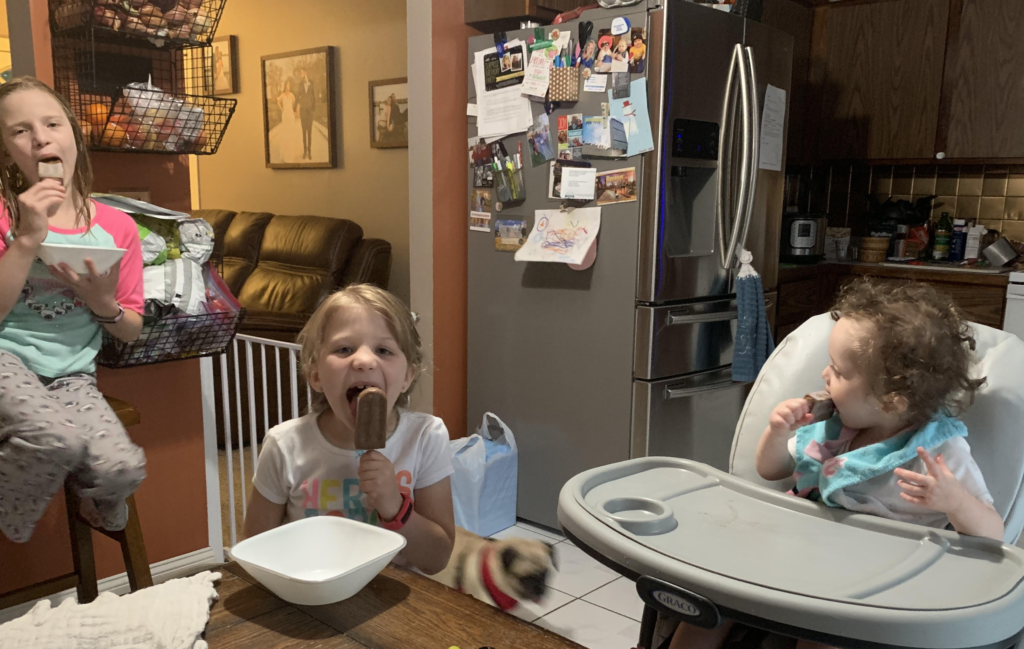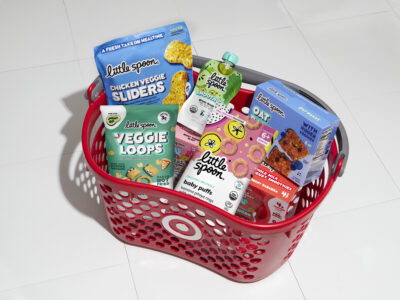As a pediatric occupational therapist, I work with kids with a wide range of skill levels, with the goal of helping them achieve their highest level of independence with their daily occupations. One of those daily occupations is eating. As adults, we might take our ability to eat for granted, but it’s actually a skill children have to develop! I often work on transitioning from purees to table foods, which can be challenging for children that are neurotypical as well as children with disabilities. If your child is struggling with this transition, it might be helpful to ask your pediatrician for a referral to see an occupational therapist or speech language pathologist that specializes in feeding. Remember, every child is different and this is not medical advice. As always, speak with your pediatrician before making any changes to your baby’s diet or eating habits.
So, it’s time for finger foods. Your baby has been happily eating their Little Spoon Babyblends for the past few months…what next?
1. Match the food to your child’s current oral motor skill level
To eat a puree, your baby’s jaw, lips, and tongue all work together as one to move the food from the front to the back of the mouth to swallow. This is easiest to do when the puree is smooth and thin. Once this skill has been mastered, you can move on to thicker purees to make it an attainable challenge. Try adding mashed banana or avocado (no lumps!) to thicken a smoother puree, like Little Spoon’s Apple blend. The texture should be similar to hummus or a very thick milkshake and should stay on the spoon if you turn it upside down. One great thing about Little Spoon is that they have blends specifically crafted for babies nutritional and developmental needs as they age, including purees of varying texture. For a more textured option, try Quinoa Raspberry Pear Coconut Milk Vanilla Date Wheat Germ Oil.
One common mistake when introducing textures is adding chunks. You might think if your child just tries that piece of fruit or vegetable in their favorite yogurt or puree that they will discover they like it. While this seems like a great idea, a mixed texture (a puree with chunks) actually requires advanced oral motor skills. If a child isn’t expecting chunks, and doesn’t have the skill to eat that chunk separately from the puree, then they could potentially choke on it. Additionally, they won’t learn the skills necessary to eat that hidden food. Instead, work on progressing from smooth purees to more textured ones before diving into chunks.
Once your child can manage a thicker puree, a good food to try next is one that easily dissolves in their mouth. Things like graham crackers (no honey flavored graham crackers if under 1!), puffs, or freeze dried fruit are typically good options. You can try these foods yourself to see if they are appropriate to give your child at this point. If they dissolve with saliva and a little bit of tongue mashing, you are good to go! Introducing these foods will start to help your child learn how to move their tongue in a way to manage more challenging textures.
Soft food can be introduced next. The ideal soft food to introduce is one that turns into a puree when you pinch it between your thumb and finger. Think a cube of cooked butternut squash or a small piece of steamed, soft carrots. To break this down in their mouth, your child starts to work on bringing their tongue side to side, an important oral motor prerequisite to true chewing. Little Spoon’s new line of toddler and kid’s meals have nutrient-packed soft food options for early eaters. Their Broccoli Bites and Beet Superfood Sliders are both great ways for your baby to start experimenting with soft foods and get their fill of veggies.
Once your little one can consistently eat soft foods that mash easily, they are beginning to gain the skills necessary to move to more challenging soft foods (woo!), like noodles, toast, muffins, pancakes, raspberries, or chicken nuggets. Once soft foods are mastered, you can gradually start introducing foods that are more firm and take more strength and skill, like a burger, grilled chicken, or apple slices. This typically isn’t until 18 months or later—so they have time to build up skills to be able to break down these more complex foods!
2. Introduce New Foods in a Low Pressure Way
Introducing your baby or toddler to a new food can take time and lots of patience. Allowing them to explore it with their other sensory systems, aside from just taste first, can increase their comfort level and actually teach them how to manage that food once they do decide to put it in their mouth. To learn about the new food, they can see it, touch it, and smell it when it is on their plate (or all over their hands and the floor!). Focusing on low pressure sensory exploration of a new food, versus well-intentioned but higher-pressure language (“Take a bite! You’ll like it! Just one bite!”) will decrease the stress level of both you as a parent, and your child. So yes, I’m telling you to let your child get messy!

Gena Mann, co-founder of Wolf + Friends, an online community that brings special needs parents, caregivers and providers together, says “Stressing about getting them to eat a variety of foods will not help.” Feeding therapists everywhere would agree with this—we want to offer opportunities and variety, but the goal for mealtimes should be a stress-free time for the entire family.
Another low pressure way to learn about new foods is to involve toddlers and children in meal preparation. This can allow them to explore foods with their vision, smell, and touch without the expectation that they need to eat it.
Gena, who has two special needs sons now in their teens, believes that this helped her son with Autism become comfortable with foods. “For Jasper, several of his therapies involved cooking. I think that helped spark his curiosity.”

3. Model, model, model!
Sitting together for meals is an easy way to model eating. Try being at eye level with your child when you are sharing a meal together at the kitchen table. Your baby watches and learns from everything you do, and chewing is no different. It’s time to get a little gross—chew with your mouth open when modeling so they can see how you are breaking down your food. You can teach manners after they learn their chewing skills! Be dramatic with your chewing and use exaggerated movements.
Try describing your food as you are eating it—but leave yum and yuck out of it! Talk about food being soft, or crunchy, or bite being big or small. Starting a habit of describing food like this, even when your baby is very young, can help set up a positive way of introducing and learning about food.

Starting solids is a long process, so don’t be discouraged if your babe doesn’t seem to be responding to a certain food or texture at first! The feeling that you’ll get once they finally accept a new food will make it all worth it…



